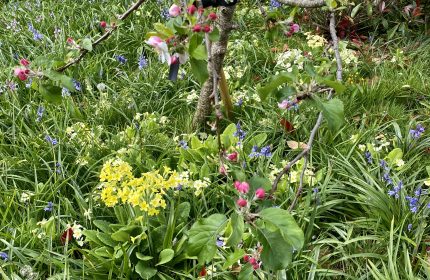Berry Bonanza
This autumn is set to produce the best wild berry harvest for years, but there’s more to our hedgerows than Blackberries and Sloes. Cloudberry, Dewberry and Guelder Rose Berry are just some of the unusual and tasty titbits waiting to be foraged
A quick glance at the UK’s hedgerows will reveal bushes bulging with the blues, purples and reds of an unprecedented berry bonanza.
This autumn, the weather gods have aligned to produce what experts are describing as one of the best wild berry harvests for many years.
The reasons are threefold – the season has started early, there are signs of a long harvest with huge numbers of berries yet to ripen and the sheer quantity of fruit this year in general is unusual.
Blackberries in particular are having a phenomenal season – good news for jam tart enthusiasts and great news for our wildlife that depends on the glut to fatten up ahead of winter.
Dr Trevor Dines, botanical specialist for the wildlife charity Plantlife, explains: “The reason for this could lie in the two-year pattern of growth shown by Blackberry canes. In the first year, long, arching ‘architectural’ canes are produced, which are vigorous and leafy but bear very few flowers or fruit. The next year, shorter “flowering” canes grow along the length of the big architectural canes, with shoots about one foot long that produce large numbers of flowers and fruit.
“Once the canes have flowered in this way, they die. The dull and wet conditions of early 2013 encouraged the growth of big, arching architectural canes – bushes literally exploded in growth. This year, these canes are flowering in profusion, encouraged by the warm, sunny conditions and resulting in a bumper harvest.”
But it is not just Blackberry bushes that are bursting with fruit. Hawthorn, the staple of many hedge and field margins is also having a spectacular year. Sloes, the deep purple fruit of the Blackthorn, are doing well due to the warm spring, which encouraged early pollinators and prevented late, flower-killing frosts. Rose-hips, Elder, Rowan (mountain ash) and Whitebeam are also laden with fruit.
But away from the usual suspects, our countryside boasts a wide variety of tasty and overlooked berries, often with weird and wonderful names.
Dr Dines adds: “There’s nothing better than a day blackberrying with the family, with stained fingers, prickled arms and a free feast at the end. I’d really encourage people to try more native wild food – there’s more to our hedgerows than just Blackberries. You can make fabulous jellies from Rowan Berries, Guelder Rose Berries, Haws and Crab-Apple and no medicine tastes better than Rose-hip Syrup for keeping a cold at bay (thanks to its high vitamin C content).
“It’s well worth seeking out some of our more unusual berries. Dewberries are similar to blackberries but have fewer “drupes” – the bobbly bits to the fruit, and have a bluish waxy bloom like sloes – they’re often much tastier than Blackberries.”
Wales and Scotland boast long traditions of collecting and eating Bilberries, which are viewed as superior in taste to North American Blueberries. The UK’s upland areas are experiencing a good crop of Bilberries, also called Whortleberry and Blueberry, and there are reports of really big fruits on our native Cranberry, a rare plant of bogs in the north and west.
Other unusual berries worth investigating include the Cloudberry. A relative of the Blackberry, it grows in upland areas and produces a delicious orange-red berry.
Stone Bramble is another uncommon type of blackberry. It grows in rocky and upland areas in the west of Britain. It has a bright red fruit, which is edible despite it’s mildly acidic flavour.
Those lucky enough to live in mountainous areas where Juniper grows can also liven up game dishes with a few of these ‘gin’ berries. There are several other upland berries to try, such as Crowberry and Cowberry, but they lack a good enough flavour to make them worthwhile.
Foraging for berries shouldn’t be confined to just hedgerows. On beaches, look for Sea Buckthorn. Its virulent yellow fruit is sharp in taste but is used to flavour everything from schnapps to meringue and blancmange.
But, as with all foraging, care is needed. Some tasty looking berries are highly toxic. Yew, Black Bryony, Ivy, Spindle, Nightshade and others can prove deadly if eaten – the golden rule is ‘if you’re not certain, don’t pick it’.
For more information on the UK berry harvest visit www.plantlife.org.uk
Latest posts by Sally - Silversurfer's Editor (see all)
- Would you like to take a flight into space? - April 14, 2025
- Brunch muffins with poached eggs, asparagus tips and smoked bacon - April 14, 2025
- What’s the best part of Easter the Weekend? - April 14, 2025
- The Boom Radio All Time Chart - April 11, 2025
- Discover Oregon: Your Ultimate Adventure Awaits with Non-Stop Flights from London Heathrow - April 11, 2025




















